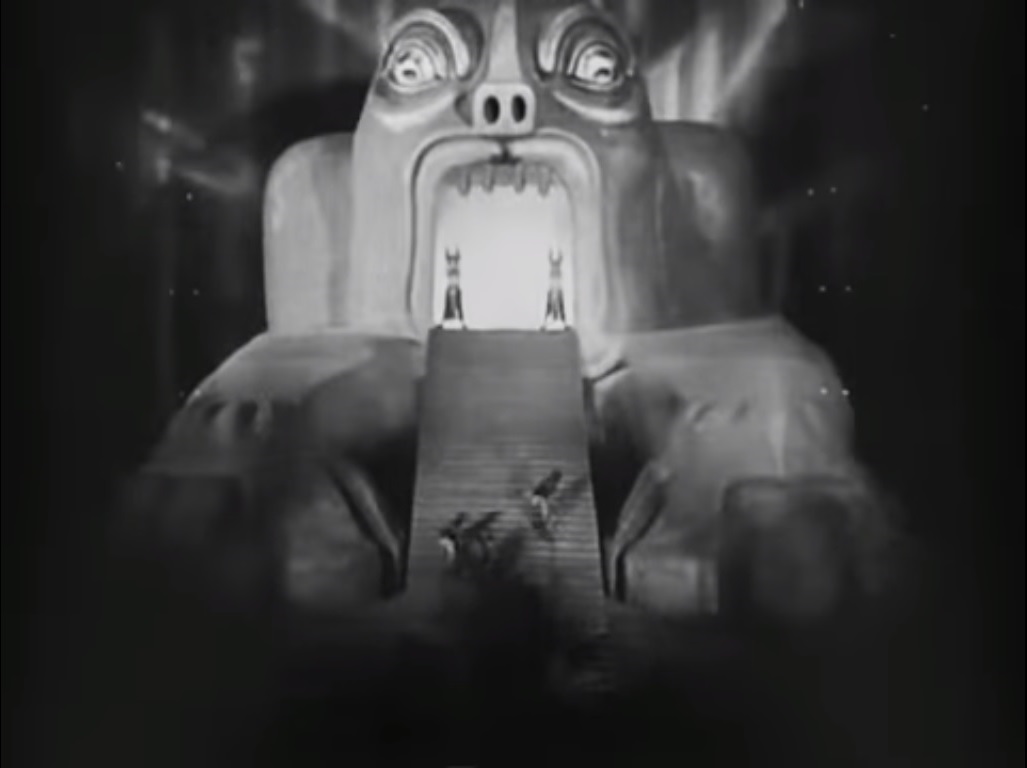| Return home |  |
Return to previous page |
Sunday, 6 May 1928, Argentina
This was a story of no interest until recently, when its ramifications at last became clear.
In Berlin for the première was
Adolfo Zicovich-Wilson,
representative of Terra Film in Argentina.
He was impressed with the film and purchased some prints — and maybe a lavender too? —
so that he could show it in his native country.
A lavender is a fine-grain low-contrast print that is used for generating copy negatives.
We now know, courtesy of
Fernando Martín Peña (pp. 47–48 ), that there were AT LEAST THREE PRINTS!!!!!
You see, Metropolis premièred in Buenos Aires simultaneously at the
Cine Callao and at the
Cine París.
Fernando tells us that it played at those two cinemas for only a week.
Apparently it was not the breakout hit that Wilson was hoping for.
It then moved to the Cine Hindu,
and on 17 May it opened the new Cine Renacimiento,
which presented it with the original Huppertz score, rearranged for 20 players by conductor J. Mongavero.
Even more fascinating is the booking at the Cine Mignon Palace,
which presented it “con títulos en alemán” — with German titles rather than Spanish titles!
The materials that Wilson imported were complete, authentic, and Fritz-approved .
What happened to these materials?
Fernando explains that, at the end of the license, Wilson was obligated to destroy any remaining copies.
Yet a single print survived.
How?
One idea I have is that Adolfo perhaps fulfilled his contract and shipped all his Metropolis materials to the
reclamation center for destruction and recycling.
Perhaps someone at the reclamation center saw the sixteen film rolls in a pile scheduled for chemical annihilation the next morning
and walked off with them, late at night when no one was looking.
Fernando has another hypothesis, one that seems a bit more likely:
Perhaps Adolfo put one print aside to donate or sell to Manuel Peña Rodriguez,
a well-known intellectual, columnist, producer, and archivist
who was urging his fellow Argentines to preserve their audiovisual history,
an idea that was then a novel concept.
After all, Fernando informs us, among the films in Manuel’s collection
were other prints from Wilson’s Terra Film.
Before July 1946, the print of Metropolis was in Manuel’s hands,
and it was shown here and there at screenings arranged by cineclubs.
Was the print battered and scratched to oblivion before July 1946?
Or was it battered and scratched later?
Fernando offers us testimony that would suggest that, apart from severe shrinkage,
the print was still in good condition at the end of the 1950’s.
The last known screening was on 19 July 1959, hosted by the
Cine Club Núcleo at the
Cine Libertador, which ran it in widescreen, which was ruinous.
The film was shrunken and buckled, and so Salvador Sammaritano pressed his finger to the rails at the top of the film trap
on each of the two projectors, in turn, switching from one machine to the next at every change-over ,
for two and a half hours, in the hopes of flattening the frame a bit to improve the focus.
Eventually, the print was hammered.
It looked as though it had been run through sandpaper.
(Was that in part the result of holding the film trap’s rails too tightly to minimize the buckling?)
Two vitally important scenes had been damaged beyond repair and were discarded.
When did that happen? How? Who was responsible?
One of the prints in Manuel’s collection, incidentally, acquired from Terra Film, was Pandora’s Box!!!
As we shall learn below, no nitrates of that film are known to survive.
Well, what about Manuel’s print?
Does it still exist?
Oh. Never mind. I should have read the next few pages before mentioning this.
All of Manuel’s 35mm materials were destroyed. Fiddlesticks!
 Silent .6796"×.90625" |
 Widescreen .446"×.825" |
 Silent .6796"×.90625" |
 Widescreen .446"×.825" |
| Question: How many cinema owners and managers care about showing the entire image on screen? |
Answer (choose one): (A) All of them. (B) Most of them. (C) A few of them. (D) None of them. Correct answer: (D). |
